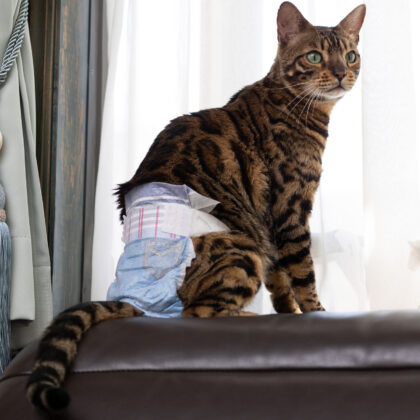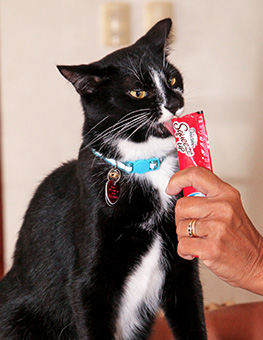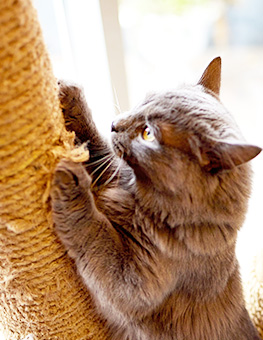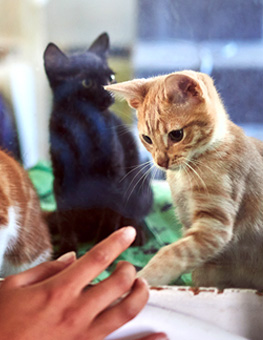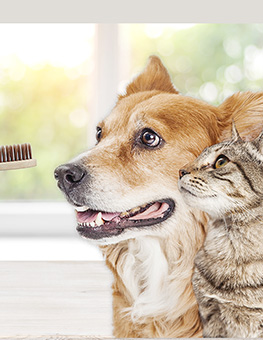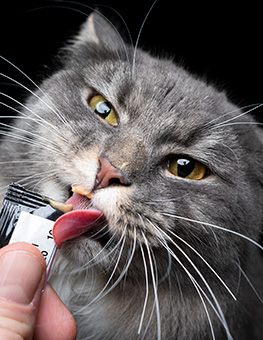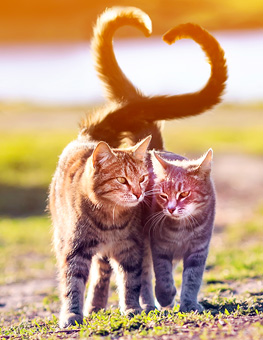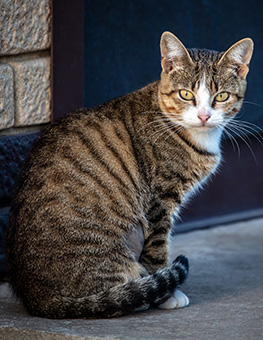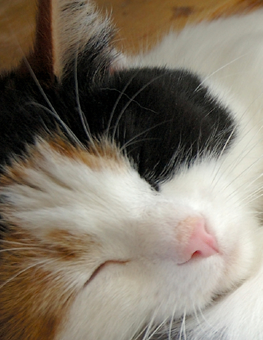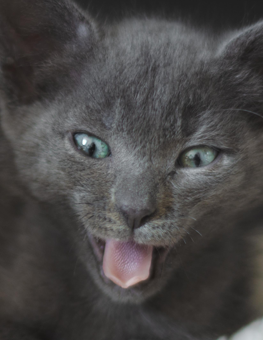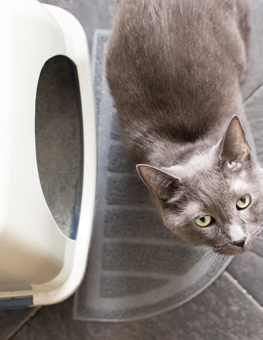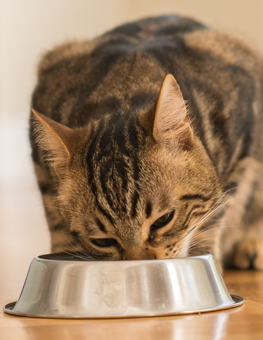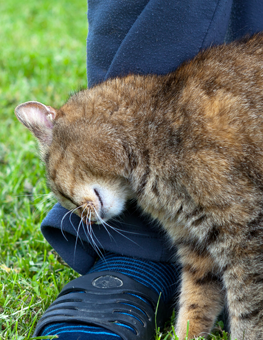How to Deal with Spraying in Cats
Spraying in cats is probably the least tolerated behavior problem among cat owners.
Urine marking is a territorial behavior and a way to say, “This is mine!”
It’s easy to know if your cat is spraying or just urinating – spraying occurs when the cat is standing up. They will back up, likely against a vertical surface such as a wall, couch, or window, and spray urine with a vibrating tail.
Although most people typically associate this behavior with intact male cats, it can occur in any cat, male or female, neutered or spayed or not. However, spaying or neutering has been shown to reduce spraying and territorial marking by up to 95% in male cats and 90% in females. If you haven’t gotten your cat fixed yet, and they are spraying, it may be a simple fix – literally!
So Why Do Cats Spray?
Urine marking is a territorial behavior and a method of communication. It’s a way to say, “I was here!” or “This is mine!” Usually, your cat will still use his litter box to urinate normally, since spraying isn’t necessarily eliminating, but rather communicating.
In indoor cats, spraying usually indicates that the cat is feeling insecure in the ownership of his territory. It may be due to a new cat in the home, conflict between existing cats in the home, or in some cases, even stray cats showing up in your yard.
How Do You Get a Cat to Stop Spraying?
The first step should be to take your cat to the vet. Although it is uncommon, sometimes spraying can be an indicator of a urinary tract infection. In extreme cases, your vet may also be able to prescribe a behavioral medication to reduce anxiety. Often, medication can be very successful in eliminating spraying caused by insecurity in the cat’s environment.
If your cat has been neutered and has been examined by a veterinarian, next, determine what may be causing the spraying. As mentioned before, urine marking is territorial and used as communication with other cats.
If you believe the spraying may be influenced by outdoor cats in your yard, keep your cat indoors and try to block off his ability to see outside, at least temporarily. Using privacy films on your windows allow natural light to come into your home without allowing your cat to see outside.
Use humane deterrents in your yard to encourage cats to stay out. There are motion-activated sprinkler systems, ultrasonic animal repellents, and more that discourage cats from hanging around but do not hurt them. If you or your neighbors feed the cats, stop. Don’t give them a reason to be there. You may want to contact a shelter or rescue group to help with trap, neuter, return (TNR). Although it’s very difficult to relocate outdoor cats, neutering them will stop those cats from spraying, which will hopefully in turn stop your cat from spraying.
If you believe that the spraying is caused by conflict between your own indoor cats, it may be necessary to separate and reintroduce them. In addition, make sure you have plenty of resources in your home and that they are spread out throughout. Cats who must share litter boxes or food bowls can become insecure and territorial, especially if they are clumped together in one spot.
Other Tips to Stop Spraying in Cats
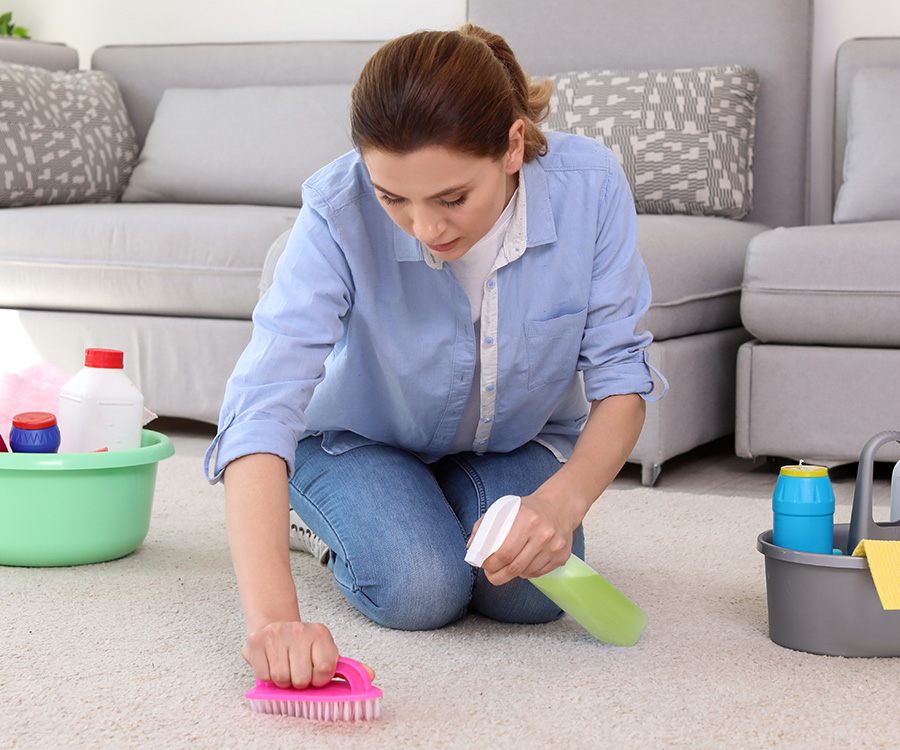
To clean up urine, use an enzymatic cleaner, which breaks it down.
- Be sure to use an enzymatic cleaner to clean up any urine. These cleaners contain chemicals that actually break down urine and reduce the chance of your cat coming back to that spot. Even if you can’t smell the pee any more, chances are, your cat can, unless you’re using the right type of cleaning product.
- Try hanging tin foil on walls or windows where your cat has previously marked as a deterrent.
- Consider adding extra litter boxes for your cat near places where they are marking.
- Scratching is another way to leave visual and olfactory signals and communicate with other cats. Cats generally don’t scratch where they urine mark, and vice versa. After cleaning up the urine, try placing a used scratching post in the location to encourage your cat to mark that way, instead.
- Cats tend to not urinate where they eat. Placing a food dish and/or water bowl in the area can help the cat to begin to think differently about the location.
- Don’t punish your cat. Urine marking, although unpleasant for humans, is a natural and normal behavior for cats. He will not understand why he is being punished, and punishment will not reduce or eliminate the behavior. Spraying can be extremely frustrating, but it is fixable. Remember to address it at the root – knowing why your cat is spraying will help you in determining how to change the behavior.
Sources: Spraying | International Cat Care (icatcare.org)



